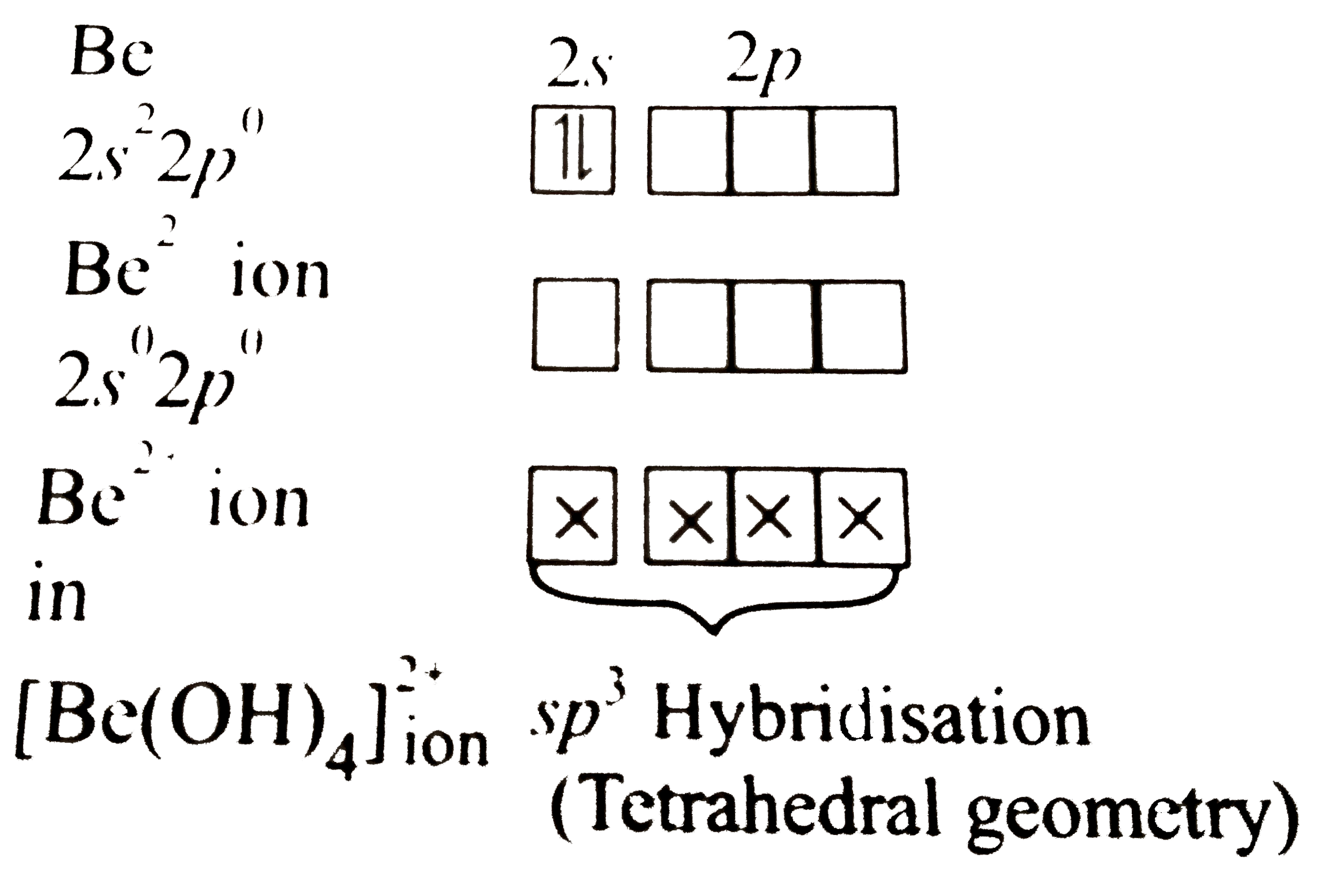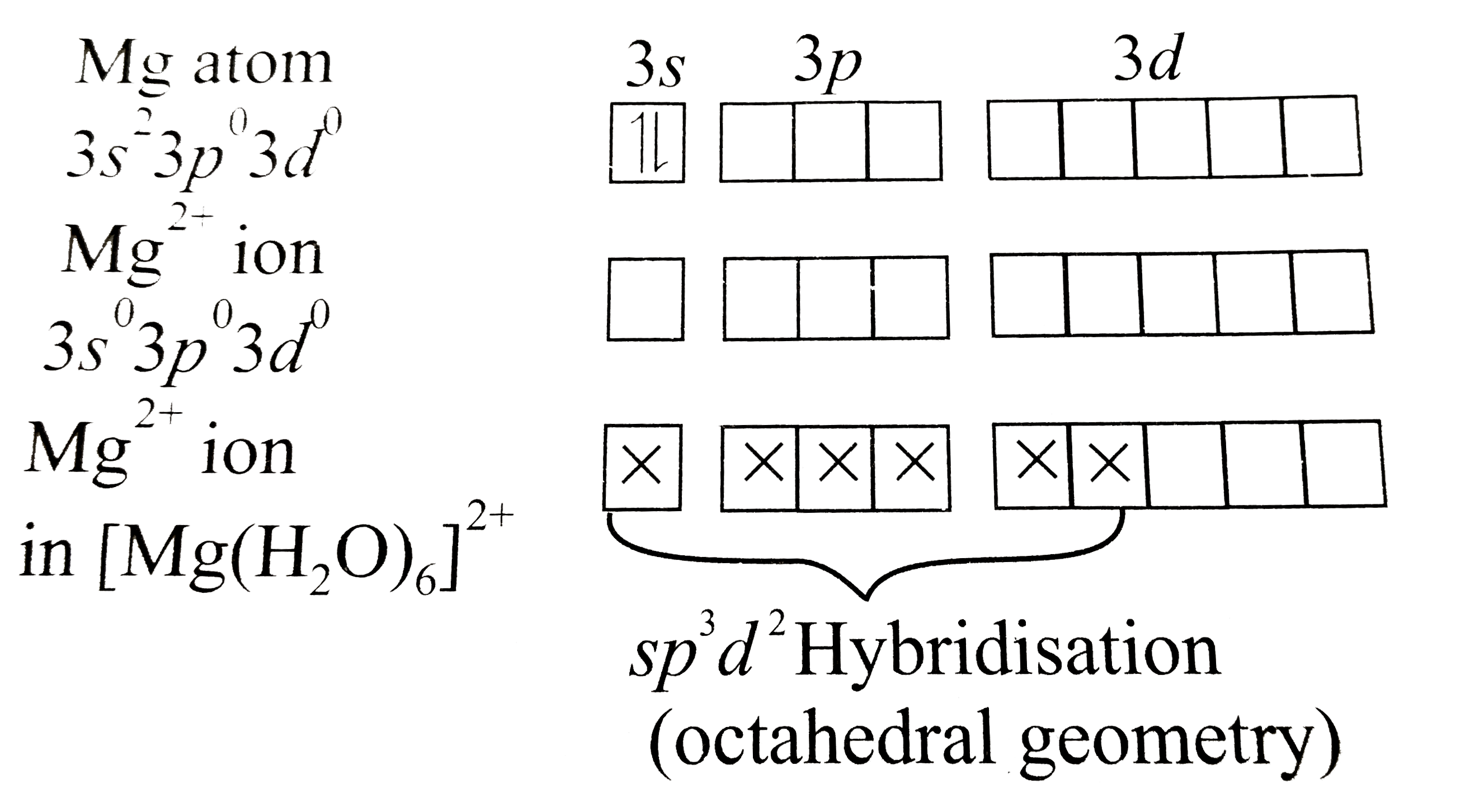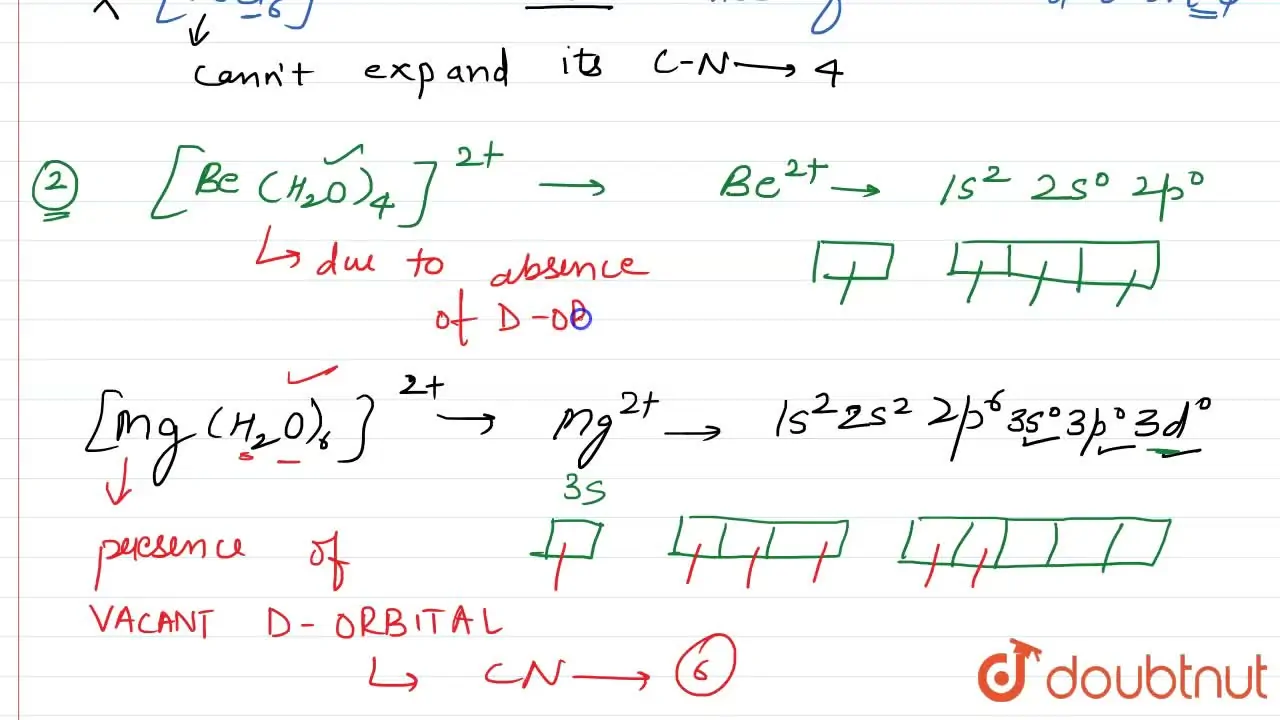(a) [BeF4]2− exits, but [BeCl6]4− does not. Give reson.
(b). Hydrated beryllium ion exists as [Be(H2O)4]2+, whereas hydrated magnesium ion exists as [Mg(H2O)6]2+. Give reason.
a. [BeF4]2− exists, but [BeF6]4− does not. This can be explained on the basis of valence electronic configuration:

Due to the absence of low-lying d-orbitals in beryllium, it cannot expand its coordination number beyond4, hence [BeF4]2− exists, but [BeF6]4− does not.
b. Hydrated beryllium ion exists as [Be(H2O)4]2+.

Due to the presence of only four orbitals of equivalent energy in Be2+ ion and due to the absence of low-lying d−orbitals in Be2+ ion, it can coordinate with four water molecules only, hence hydrated beryllium ion exists as [Be(H2O)4]2+.
Whereas in case of magnesium, due to the availability of low-lying d-orbitals of suitable energy, Mg can expand its coordination number to 6

Hence, hydrated magnesium ion exists as [Mg(H2O6)]2+
Related Playlists
- BOOK - CENGAGE CHEMISTRY ENGLISHCHAPTER - S-BLOCK GROUP 2 - ALKALINE EARTH METALSEXERCISE - Solved Example6videos
S-BLOCK GROUP 2 - ALKALINE EARTH METALS
- BOOK - CENGAGE CHEMISTRY ENGLISHCHAPTER - S-BLOCK GROUP 2 - ALKALINE EARTH METALSEXERCISE - Exercises Linked Comprehension42videos
S-BLOCK GROUP 2 - ALKALINE EARTH METALS
- BOOK - CENGAGE CHEMISTRY ENGLISHCHAPTER - S-BLOCK GROUP 1 - ALKALI METALSEXERCISE - Archives Subjective8videos
S-BLOCK GROUP 1 - ALKALI METALS
- BOOK - CENGAGE CHEMISTRY ENGLISHCHAPTER - SOME BASIC CONCEPTS AND MOLE CONCEPTEXERCISE - Archives Subjective11videos
SOME BASIC CONCEPTS AND MOLE CONCEPT
Similar Questions
Why [BF6]2− ion does not exist?
View Solution[Sc(H2O)6]3+ ion is :-
View SolutionThe type of magnetism exhibited by [Mo(H2O)6]2+ ion is _______.
View SolutionIn [Ni(H2O)6]2+ , the hybridisation of central metal ion is :
View SolutionThe type of magnetism exhibited by [Mn(H2O)6]2+ ion is ________ .
View SolutionThe hybridisation and unpaired electrons in [Fe(H2O)2+6] ion are :
View SolutionExplain the following giving reasons
[Fe(H2O)6]3+ ion is more paramagnetic than [Fe(CN)6]3− ionView SolutionAlum is found to contain hydrated monovalent cation [M(H2O)6]+ trivalent cation [M'(H2O)6]+ and SO3−4 in the ratio of:
View SolutionWith Zn2+ions [Fe(CN)6]4− ions gives …ppt
View SolutionCalculate the oxidation number of Ni ion [Ni(H2O6)6]2+] .
View Solution


